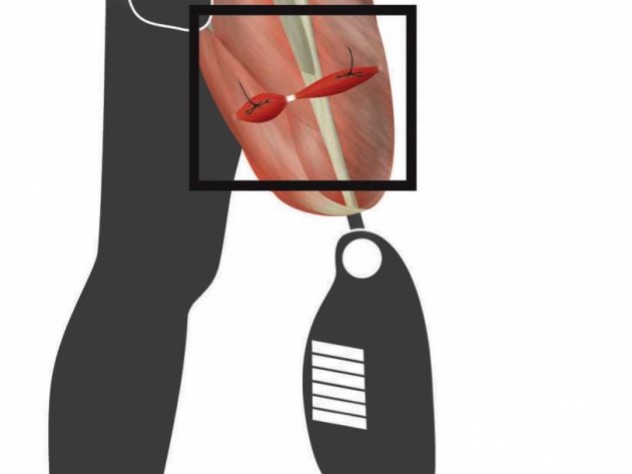
A surgical technique designed to preserve proprioceptive signals after amputation should allow patients to sense the location of their prostheses, feedback that is often compromised by convential surgery. Image courtesy of Shriya Srinivasan.
MEMP student Shriya Srinivasan is featured in the September-October 2017 issue of Harvard Magazine for her work to improve the process for performing amputations.
"Today's state-of-the-art prosthetic limbs are scientific marvels, designed with robotics and sensors that respond to neural and muscular signals, to give users the possibility of greater function and control.
But amputation techniques lag far behind these sophisticated prostheses. 'The amputation paradigm hasn’t significantly changed in the last 200 years,' explains Shriya Srinivasan, a doctoral student in the Harvard-MIT Health Sciences and Technology (HST) program. In typical amputations, nerves and muscles are cut and arranged somewhat haphazardly; the main goal is to create a sturdy, well-padded appendage. 'The types of neural signals and muscles signals that you get are really unstable. They decrease over time, and sometimes researchers can’t isolate individual muscles,' Srinivasan says, calling this 'a mismatch between the technology and the human physiology.'"
Read the full article by Erin O'Donnell here: http://harvardmagazine.com/2017/09/prosthetic-limbs-advancements